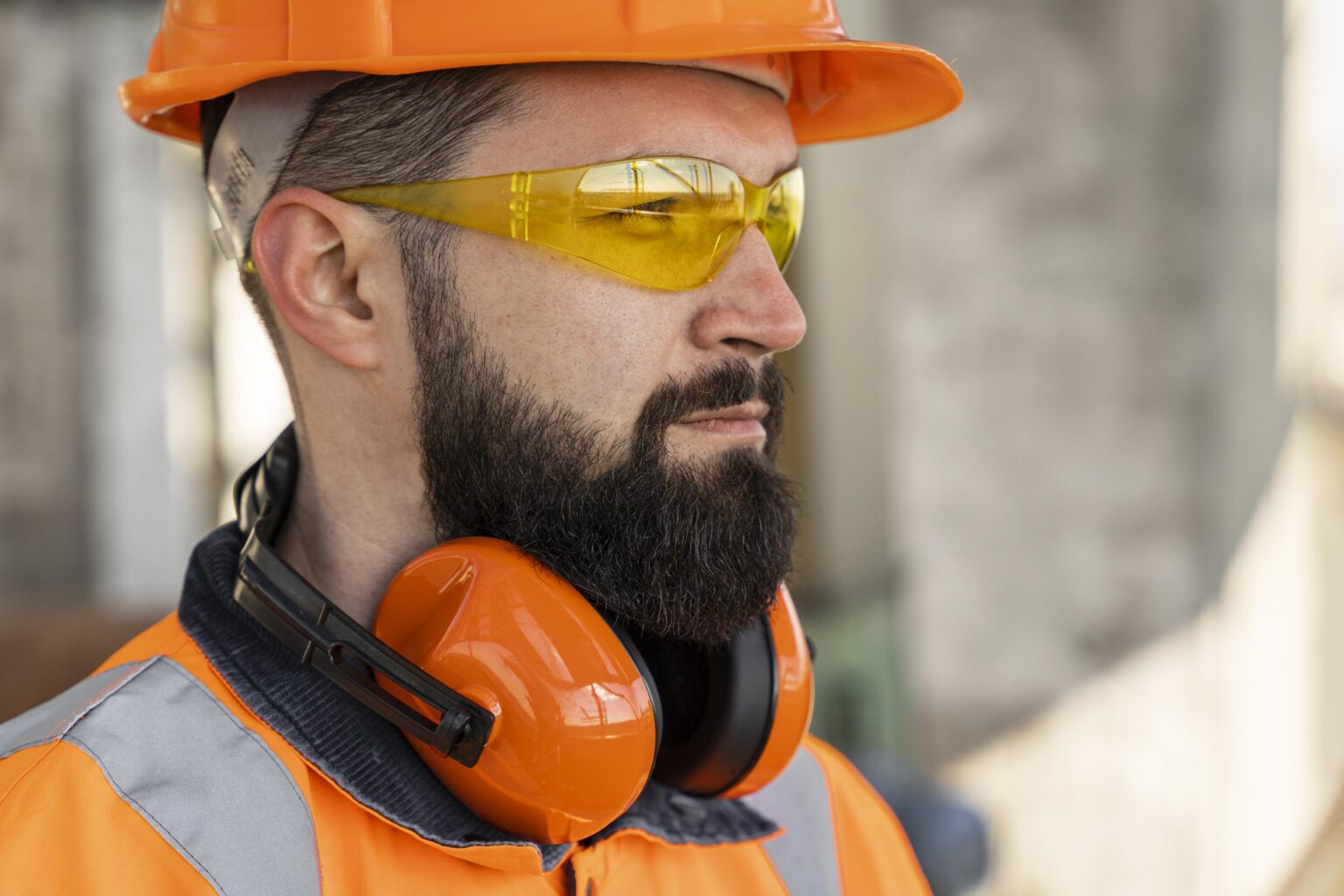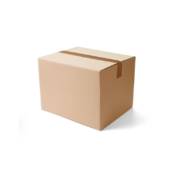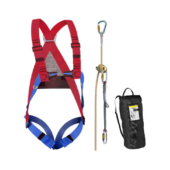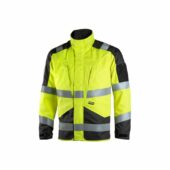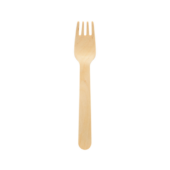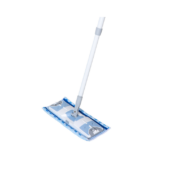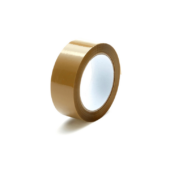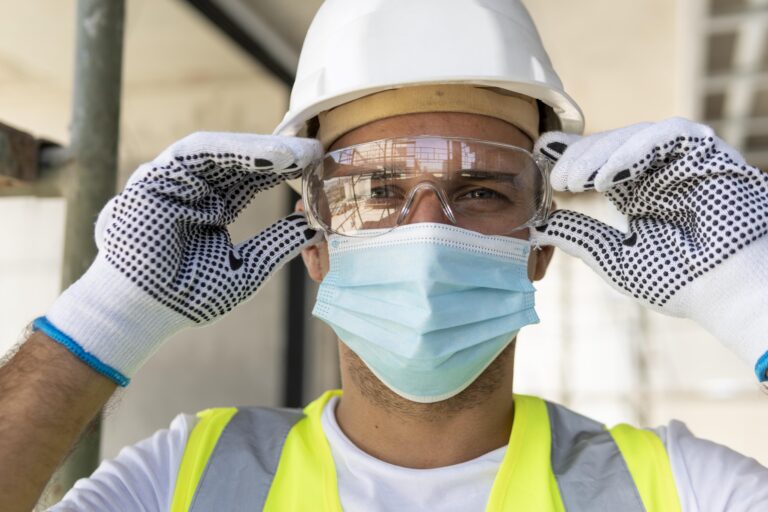Choosing the right hearing protection for construction workers can be tricky with so many options available. This guide will simplify the process, helping you select the best hearing protectors for your team. We’ll cover key factors like Noise Reduction Ratings (NRR), comfort, compatibility with other PPE, and durability. By the end, you’ll have all the information needed to make an informed choice.
With our experience in workplace safety, we’ll ensure that you pick the right solution that supports both safety and comfort. And once you’ve made your selection, we’ll guide you on how to ensure it’s used correctly to provide maximum protection.
Understanding Noise Reduction Ratings (NRR)
The Noise Reduction Rating (NRR) is a critical metric for evaluating ear defenders. It indicates the amount of noise reduction the protector can provide in decibels (dB). For example, if the noise level at a construction site is 100 dB and the protector has an NRR of 30, the perceived noise is reduced to approximately 70 dB.
Key Points:
- Look for a balance between high NRR and comfort.
- Check that the NRR complies with European safety standards, such as EN 352.
- Match the protector’s rating with workplace noise levels:
| Noise Level (dB) | Recommended NRR (dB) |
| 85-95 | 20-25 |
| 96-105 | 25-30 |
| 106+ | 30+ |
Types of Hearing Protectors for Construction Workers
1. Earmuffs
Earmuffs cover the entire ear, offering robust protection and are suitable for extremely noisy environments. They are easy to wear and remove, making them ideal for intermittent use. Many models also feature adjustable headbands for added comfort during long shifts.
Learn more: Earmuffs: Selecting The Right Hearing Protection
2. Earplugs
Earplugs are inserted into the ear canal, offering a lightweight and portable solution. They are excellent for workers who need constant protection throughout their shift. Disposable options are cost-effective for temporary use, while reusable models are suitable for daily wear.
Learn more: How To Choose The Right Earplugs – A Buyer’s Guide
3. Combination Solutions
Double hearing protection is an effective way to enhance safety and maintain comfort in environments exceeding 100 dB. It’s particularly useful for tasks involving jackhammers or industrial saws.
Explore related article: Guide To Double Hearing Protection
Factors To Consider When Choosing Hearing Protectors
1. Noise Levels
Assess the typical noise levels at your site. Use a sound level meter to measure noise exposure or consult equipment specifications. For highly noisy environments, earmuffs or dual protection might be essential.
2. Comfort
Long shifts demand comfortable hearing protectors. Look for features like cushioned headbands (for earmuffs) or soft foam material (for earplugs). Some earmuffs also come with ventilation to reduce heat build-up around the ears.
3. Compatibility With Other PPE
Ensure the protectors fit well with other Personal Protective Equipment (PPE) like hard hats and goggles. For example, slim-profile earmuffs are better suited for use under helmets.
4. Durability and Maintenance
Reusable protectors like earmuffs should be easy to clean and durable enough for daily use. Disposable earplugs, on the other hand, need frequent replacement. Check for materials resistant to wear and tear in harsh environments.
5. Cost-Effectiveness
While safety is paramount, budget constraints should be considered. Bulk purchasing options for items like earplugs can save costs without compromising quality.
Comparing Earmuffs and Earplugs for Construction Use
| Feature | Earmuffs | Earplugs |
| Noise Reduction | High (suitable for extreme noise) | Moderate to high |
| Comfort | Comfortable for short durations | Better for long-term use |
| Cost | Higher initial cost | Economical, especially in bulk |
| Maintenance | Reusable, easy to clean | Disposable or reusable options |
| Compatibility | May interfere with helmets or goggles | Easy to pair with other PPE |
For more guidance on this decision, explore our dedicated comparison: Earplugs vs. Earmuffs.
Additional Safety Considerations
1. Standards and Compliance
Ensure all hearing protectors meet European standards such as EN 352, which specifies requirements for hearing protectors. For more on these standards, refer to this Wikipedia page.
2. Training and Usage
Proper training empowers workers to use hearing protection effectively, ensuring maximum safety and comfort. Use visual aids or demonstrations during training sessions.
3. Secondary Protection Needs
Incorporating complementary PPE like cut-resistant gloves and safety helmets enhances overall worker safety and efficiency on construction sites.
Recommended Products and Resources
Explore our curated selection of Hearing Protectors for construction workers. Whether you’re looking for earmuffs, earplugs, or combination solutions, you’ll find high-quality options tailored to your needs.
For enhanced safety, consider pairing your hearing protection with other PPE options like cut-resistant gloves or hard hats.
Conclusion
We hope this guide has been helpful in navigating the key factors for choosing the right hearing protectors, from Noise Reduction Ratings (NRR) to comfort and compatibility with other PPE. Whether you’re outfitting workers on construction sites or ensuring safety in other noisy environments, we’re here to support your needs.
Explore a wide range of hearing protectors on Droppe, where trusted brands are available to provide the protection you need.
For more related guides, explore sibling articles like Choosing Hearing Protection for Welding and How To Choose The Right Earplugs – A Buyer’s Guide.
Have questions or need advice on selecting the best hearing protection? Don’t hesitate to reach out—we’re always here to help ensure your team’s safety and comfort with every purchase.
– The Droppe Team
Frequently Asked Questions
Choose hearing protectors that fit snugly without causing discomfort. Earmuffs should cover your ears completely, and earplugs should create a good seal in the ear canal.
Yes, but it’s essential to choose ear protection that’s compatible with other PPE. Some earmuffs may interfere with glasses or helmets, so check for designs that accommodate both.
Reusable earmuffs should be checked regularly for wear, while earplugs, especially disposable ones, need to be replaced frequently to maintain effective protection.
Yes, there are hearing protectors designed specifically for those with hearing impairments, offering both noise reduction and amplification for clear communication.
No, hearing protectors are rated for specific noise levels and types. For high-impact or fluctuating noises, consider using higher NRR options or combination protection.

